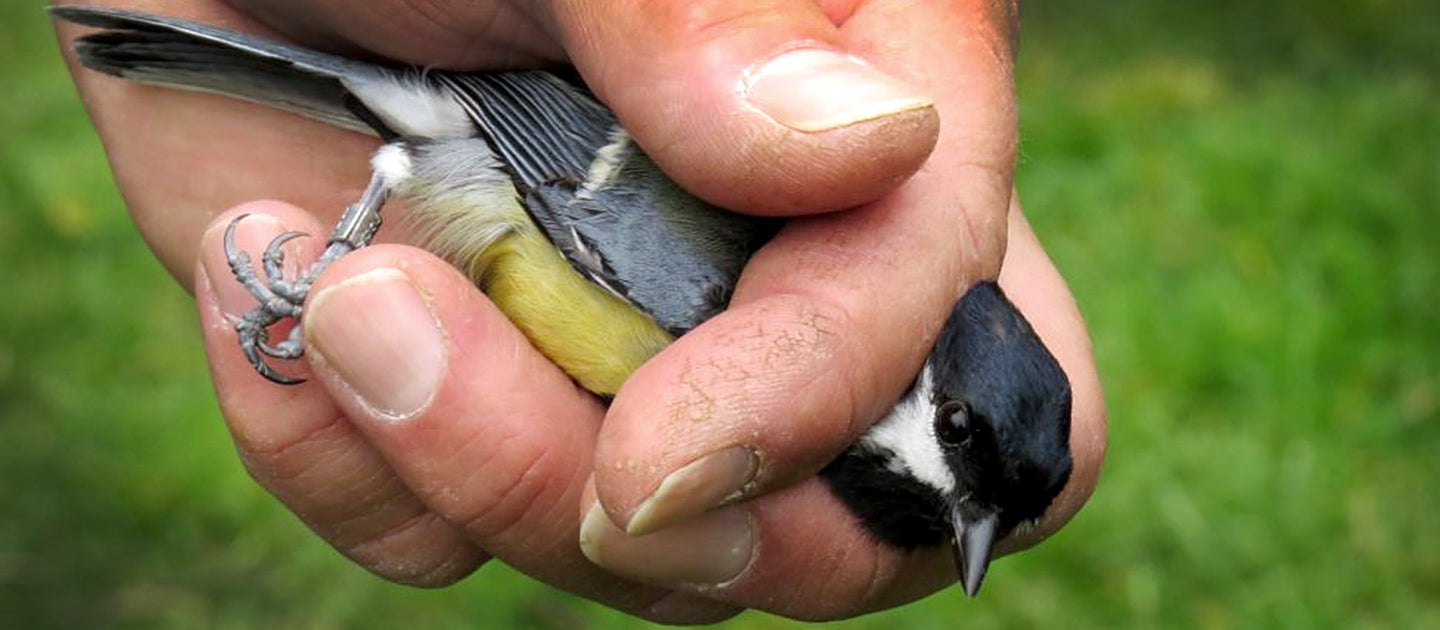
Bringing Ringing to Everyone tunes young minds into nature. Volunteers unlock the joy of birdwatching while building a new generation of dedicated conservationists.
Bird ringing provides a vital role in the study of bird behaviour, ecology and conservation, in being able to monitor such things as changes in a birds migration patterns, population success and general health and life span. All important when looking to understand how to conserve and protect species and the environments that support them.

Normally bird ringing is undertaken in areas not easily accessed by or open to the public, so Friends of Glasgow's Local Nature Reserves wanted to be able to host a minimum of two Bird Ringing Demonstration events to highlight to children and adults how fascinating birds can be, especially when close up. During these bird ringing sessions, the birds would be caught safely in a 'mist net' and then ringed with a coded ring which could be read by anyone that spots or finds the bird.
All ringers are volunteers and pay for their equipment - nets and rings, so the group was after funding to help make sure these events went ahead.
Jim Coyle, Chair at Friends of Glasgow’s LNR applied to the Alpkit Foundation for some support and with a £150 grant, plus some additional funding from the group, they were able to provide two 6m ‘mist nets’ and bird rings (three sizes to suit a range of birds) for a qualified ringer.

The onset of Covid 19 and all the necessary precautions meant it took a lot longer to undertake these events than originally planned, however Jim recently got back in touch to let us know how they got on once they had finally managed to host them.

“The events were really popular and we received positive comments from virtually everyone that attended them, while the ringers proved to be excellent in communicating the importance of their work to everyone that attended. Spread from September to May, those attending were able to see 15 different species close-up, including summer and winter migrants as well as the UK's smallest bird - the Goldcrest and one of the UKs major predators – the Sparrowhawk. Information collected included the sex, the age and the weight of the bird with all of this data fed into data banks and will contribute to the science that will help to monitor and ultimately develop UK/European/world-wide bird & habitat protection policy. The Dawsholm event also contributed data to the ‘City Nature Challenge' a world-wide project led in Scotland by the RSPB"

By hosting these events it allowed the group to demonstrate to a wider audience the importance of bird ringing and the fascinating information that can be obtained. It also allowed them to demonstrate to the City Council that they were once again able to put on interesting and worthwhile events in Glasgow’s LNRs, working in partnership with other groups and funders.
“Everyone that attended or just stopped for a quick look were totally fascinated. Many didn’t realise that some of ‘our’ birds actually only spend less than 6 months in the UK. Others didn’t realise that some birds weighed so little as 10 grams and that others were capable of migrating 1000s of miles to and from the City. Others began to understand why the Council managed the LNRs in the way that they do and the importance of having a range of habitats, whether it be, for example, wildflower meadows or scrub. We were so thankful once we got the ‘all clear’ and the success of the events has made us determined to host further events commencing in August this year.”
Check out the work of Friends of Glasgow's Local Nature Reserves
